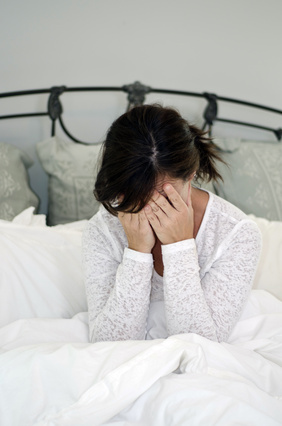Distinguishing Sexual Pain

It’s believed that pain during sex is experienced by about 40% of women, but figures may actually be higher since it is not always reported or documented. The clinical term for pain during sex is dyspareunia, although the term itself is not very descriptive and too general to be helpful. Since sexual pain can be the result of many different causes, it’s necessary to distinguish the different kinds of pain in order to address it properly. Addressing it early also means a quicker resolution so that it doesn’t interfere with your sex life and overall wellbeing.
One very helpful way to start to address sexual pain is to consider the location of the pain. Whether the pain occurs externally (the vulva or labia), internally (the vagina), or deep (cervix, uterus, or other internal organs) gives us many clues as to how to approach sexual pain. Not all pain is of the same intensity, but rather than avoid the pain – finding the cause of the pain puts you that much closer to resolving it.
If the pain is occurring externally, a woman may experience discomfort of the labia or the areas to either side or just below the vaginal opening. Occasionally, yeast infections can cause irritation, especially on the inside of the labia minora. Pain to either side or just below the vaginal opening may be due to vulvodynia – a more complex condition that often is accompanied by weakness and/or tightness in the pelvic floor muscles. Some women also experience a feeling of burning or uncomfortable stretching when attempting penetration, which could be due to changes in hormones, or sometimes even scar tissue from an episiotomy. A decrease in free testosterone can also result in pain just at the opening of the vagina.
If the pain is experienced internally, the first thing to rule out is any type of infection. Not all infections will cause sexual pain, but those that do, such as yeast infection or Trichomonas, are easily treated (don’t forget your partner needs treatment too). Once the possibility of infection is ruled out, other causes of internal sexual pain can be explored. Probably the most common is a decrease in estrogen as is found in menopausal women, or women just after childbirth. The changes in hormone levels are reflected in the tissues lining the inside of the vagina. Without the support of estrogen, penetration can produce irritation, burning, or even some minor bleeding.
Lastly, pain that is experienced deep inside is most likely related to one’s internal organs. Endometriosis is a very common cause of sexual pain, especially during deep penetration. Sometimes, women can experience pain during certain sexual positions if their uterus is tilted backwards (what is referred to as retroverted uterus), but usually finding a different position or angle of entry helps this situation. Also, if there is inflammation in other pelvic organs such as an ovarian cyst (even a benign follicle during ovulation), these may cause some pain during penetration due to the closeness of these structures to the vaginal canal.
Too many times, women are embarrassed to address their sexual pain, so they put it off until it starts to affect their pleasure and desire for sex. Also, not all doctors are created equal and there are some doctors who work very well with women that experience sexual pain, while others seem clueless, frustrated, and dismissive. If you find yourself with one of these doctors, please move on to a more understanding and connected doctor. Please do not delay in getting a proper examination if you have any unexpected bleeding, discharge, or changes in your skin. Your sexuality is a vital part of you which does not deserve to be ignored or minimized.
Dr. Castellanos is a psychiatrist specializing in sex therapy for over 25 years, including treatment with bio-identical hormones, and functional medicine consultations. You can follow her on Instagram at thesexmd, Facebook at The Sex MD, and X at @DrCastellanos.









